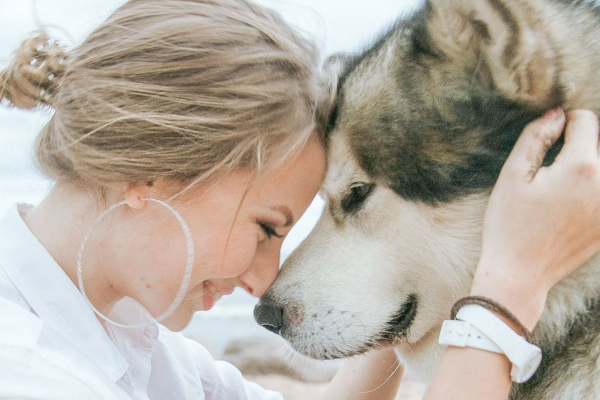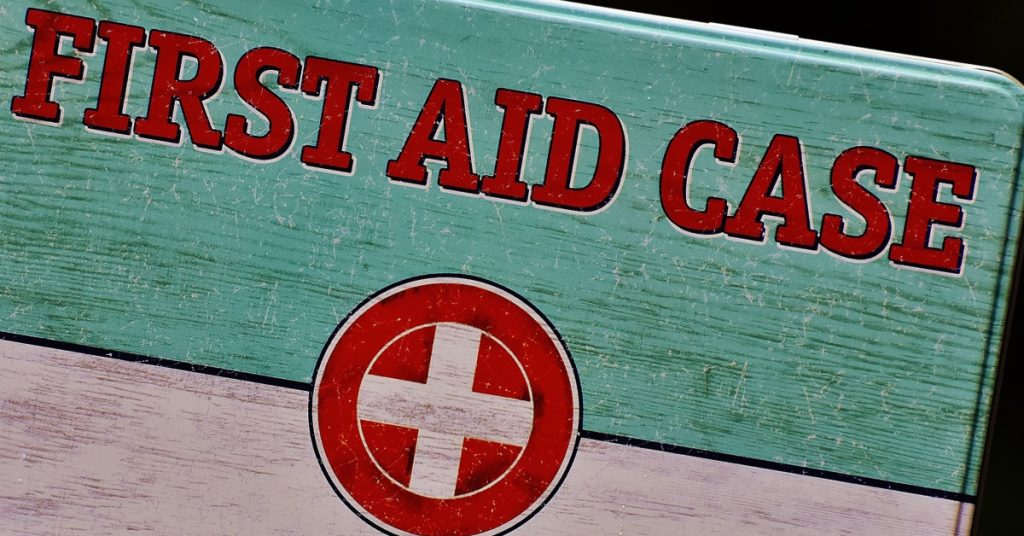
We’ve all experienced accidents. Injuries. Sudden illness. Poisoning. Natural disasters. These things happen to our pets, too, so it’s important to have both human and pet-specific first-aid supplies on hand.
We recommend putting together two pet first-aid kits – one for your car and one for your home. Before you create your pet’s first-aid kit, talk with your veterinarian, who will suggest items appropriate for your pet’s breed, age, medical history, and lifestyle.
You can buy ready-made first-aid kits for pets, and you can also use many of the supplies in your household first-aid kit for your pet.

Here are some basic items for your furry family member’s first-aid kit:
➡️ Contact information. A hard copy of phone numbers and email addresses for your veterinarian, emergency veterinarian, animal control, and animal poison control. Program this information into your cell phone, as well.
➡️ Medications. Backup supplies of all current prescribed medications (make sure they have not expired). Also include vet-approved, over-the-counter medications such as flea and tick preventives, sedatives for traveling, and antacids.
➡️ 3% Hydrogen Peroxide. If your pet ingests something poisonous, you may need to induce vomiting. Always contact your local animal poison control or your veterinarian before inducing vomiting.
❗ Do not use Hydrogen Peroxide to clean or disinfect wounds, as it can slow healing.
➡️ Milk of magnesia or activated charcoal can be used to absorb poison. As with Hydrogen Peroxide, always contact your local animal poison control or your veterinarian before administering either of these items.
➡️ Canned tuna (in water) or a can of chicken broth. Some plants and household cleaners can irritate your pet’s mouth, causing severe drooling and foaming. Giving your pet something tasty (such as the water from the can of tuna) can dilute the taste and safely flush the chemical out of your pet’s mouth and esophagus.
➡️ Saline wound flush for cleaning, irrigating, or flushing a wound. A bottle of saline eye/contact lens flush or saline nasal spray can also be used.
➡️ Liquid dish soap (not dishwasher soap) can be used to gently remove potentially poisonous chemicals or toxins from your pet’s fur.
➡️ Antibiotic ointment. For minor skin wounds, over-the-counter antibiotic ointment may work in a pinch. Ask your veterinarian which ointment they recommend for your pet.
➡️ Bandages and gauze. Do not use human adhesive bandages on pets. Invest in vet wrap, a flexible, stretchy, self-adhering bandage that is semi-watertight. Ask your veterinarian to recommend the correct width and to show you how to properly apply it.
Also include gauze rolls, gauze pads, non-stick bandage pads, self-adhesive bandage covers, bandage tape, blunt-tip bandage scissors, and tweezers.
➡️ Rectal thermometer, water-based lubricating jelly for use with the thermometer, and disposable gloves. Know what your pet’s “normal” is and ask your veterinarian how to properly use the thermometer.
➡️ Muzzle. When pets get wounded, they can become frantic. A muzzle covers your pet’s head and keeps it from biting. If your pet is vomiting, do not muzzle it!
➡️ Leash, collar, poop bags, and kitty litter. Dogs can snap leashes in accidents, and a sick dog goes through a LOT of poop bags! If you are a cat owner and need to evacuate your home, you’ll be thankful that your first-aid kit includes a quart-size bag of kitty litter.
➡️ Collapsible travel food and water bowls. Whether you’re running errands, taking a road trip, or hiking, your pet needs to stay hydrated. Silicone bowls are ideal, as plastic can easily break into sharp pieces.
Include bottled water in your first-aid kit, too, of course.
➡️ Canned pet food. In some emergencies, you may need to evacuate immediately. Make sure your kit includes several cans of canned food with a pop-off lid, in case you forget a can opener.
Where to store pet first-aid supplies
Put supplies in a large tool box, fishing tackle box, backpack, shoulder bag, rubber bin, or in a heavy-duty, sealable plastic bag. Whatever storage system you use, make sure it’s easy to pick up and take wherever your pet needs treatment.
Store a kit in each automobile you drive, and one kit inside your home, out of the reach of children and pets.
Check your first-aid kit every few months and replace any missing or expired items.
Additional Resources


